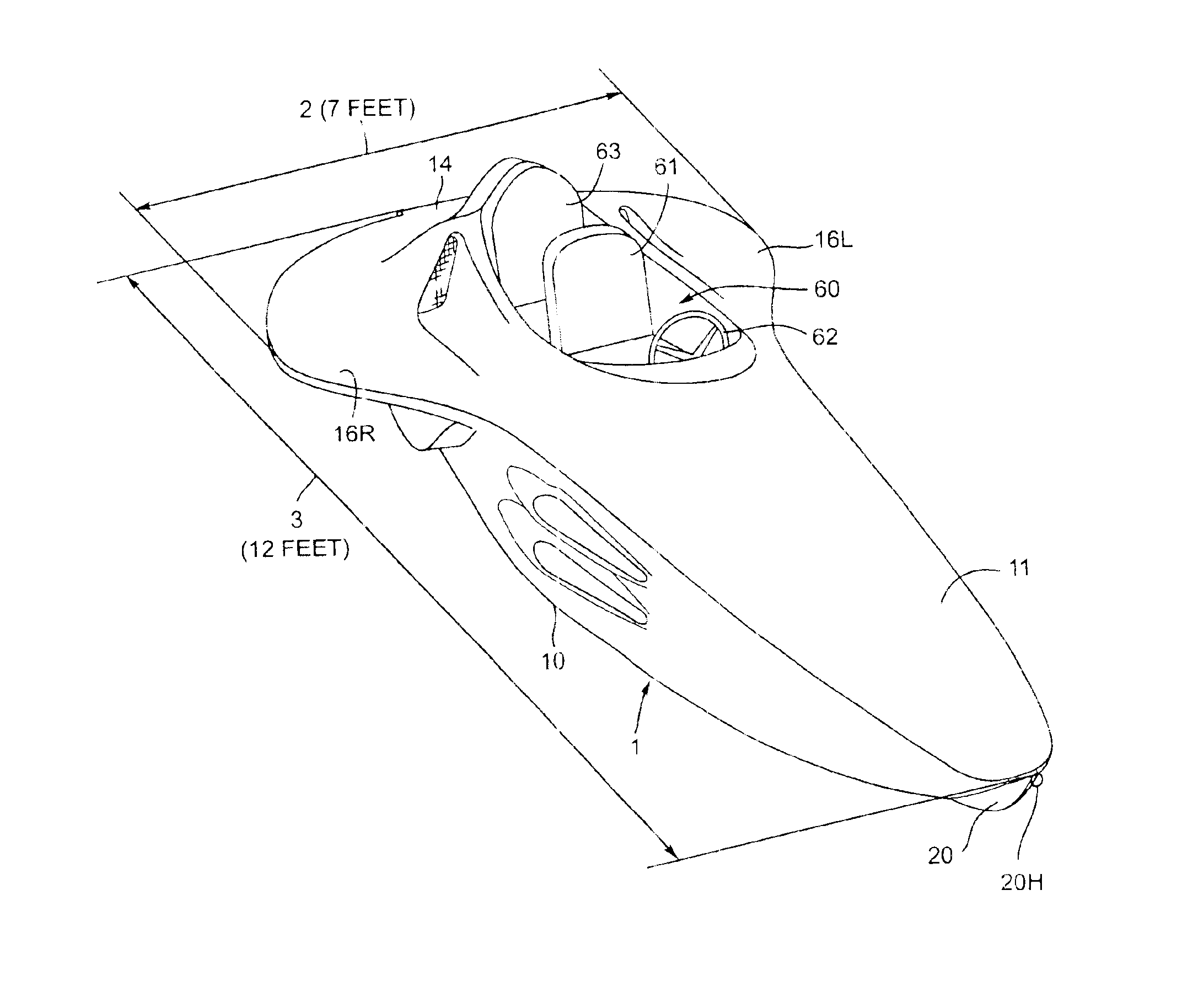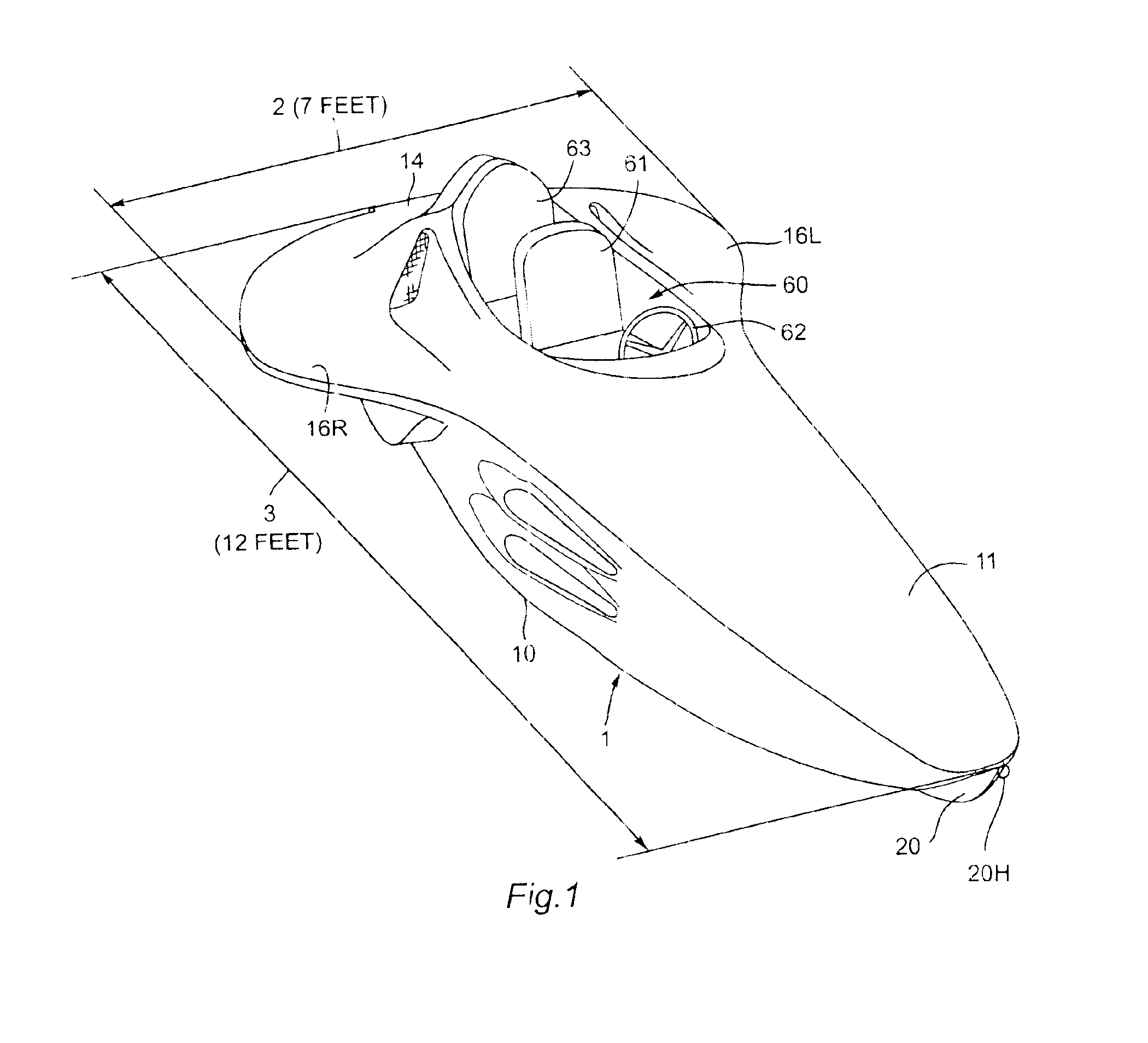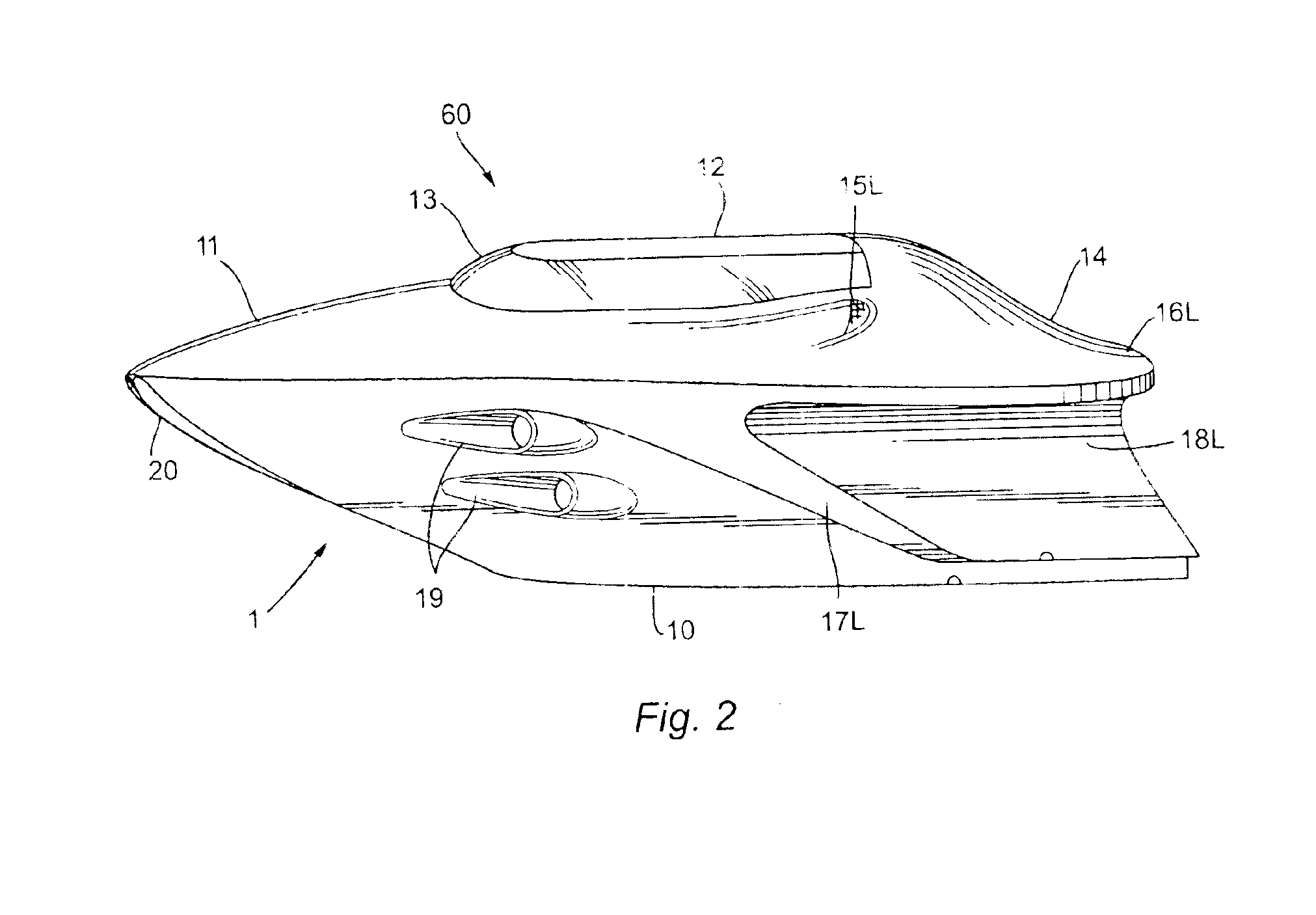Hybrid watercraft
a watercraft and hybrid technology, applied in the field of watercraft, can solve the problems of limiting the usefulness and enjoyment of such watercraft, personal watercraft tend to be ill-suited to certain recreational uses, and riders of personal watercraft tend to get wet, so as to accelerate water loading
- Summary
- Abstract
- Description
- Claims
- Application Information
AI Technical Summary
Benefits of technology
Problems solved by technology
Method used
Image
Examples
Embodiment Construction
[0034]A preferred embodiment of the present invention with two passenger seats is illustrated in FIGS. 1-8. Although FIGS. 1-8 are described in greater detail below, the following is a glossary of the elements identified in the Figures:[0035]1 watercraft[0036]2 width dimension of watercraft 1[0037]3 length dimension of watercraft 1[0038]5 water line[0039]6 angle of attack of watercraft in water[0040]10 hull[0041]11 nose section of hull 10[0042]12 mid-section removable canopy[0043]13 transparent window[0044]14 aft end-section of hull 10[0045]15L left air intake[0046]15R right air intake[0047]16L left wing[0048]16R right wing[0049]17L left hull ramp[0050]17R right hull ramp[0051]18L left wing reverse curved surface[0052]18R right wing reverse curved surface[0053]19LH left high beam headlight[0054]19LL left low beam headlight[0055]19RH right high beam headlight[0056]19RL right low beam headlight[0057]20 keel[0058]20H keel hook[0059]21L left stabilizer[0060]21R right stabilizer[0061]22 ...
PUM
 Login to View More
Login to View More Abstract
Description
Claims
Application Information
 Login to View More
Login to View More - R&D
- Intellectual Property
- Life Sciences
- Materials
- Tech Scout
- Unparalleled Data Quality
- Higher Quality Content
- 60% Fewer Hallucinations
Browse by: Latest US Patents, China's latest patents, Technical Efficacy Thesaurus, Application Domain, Technology Topic, Popular Technical Reports.
© 2025 PatSnap. All rights reserved.Legal|Privacy policy|Modern Slavery Act Transparency Statement|Sitemap|About US| Contact US: help@patsnap.com



